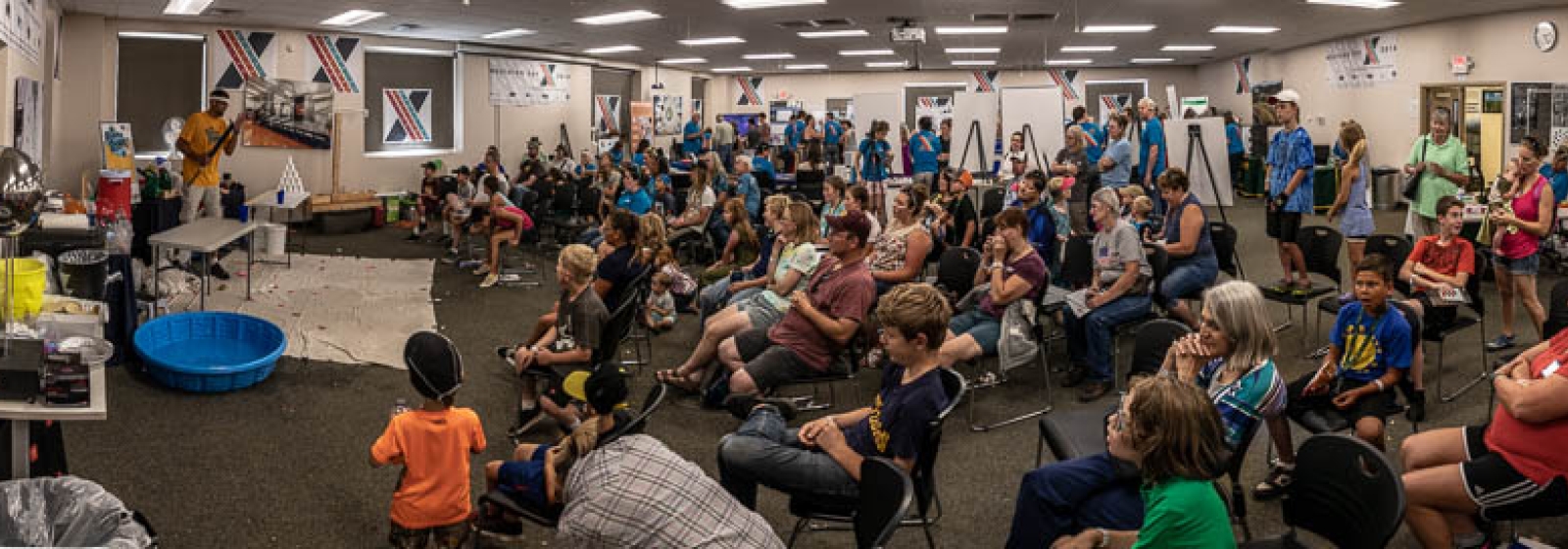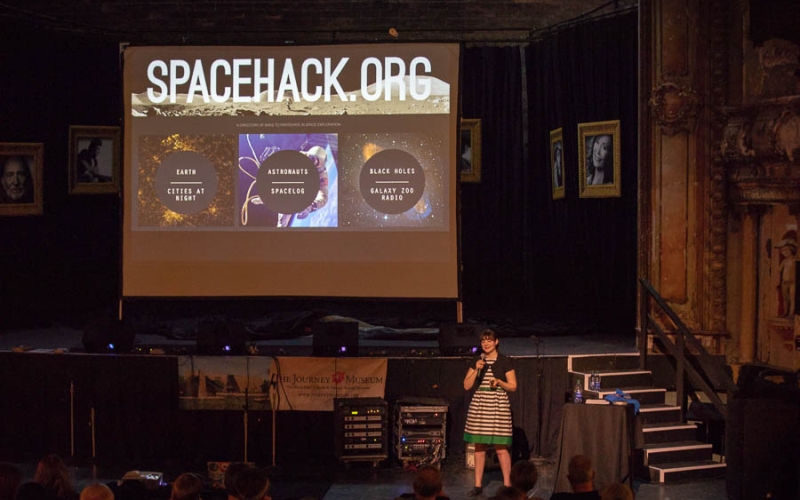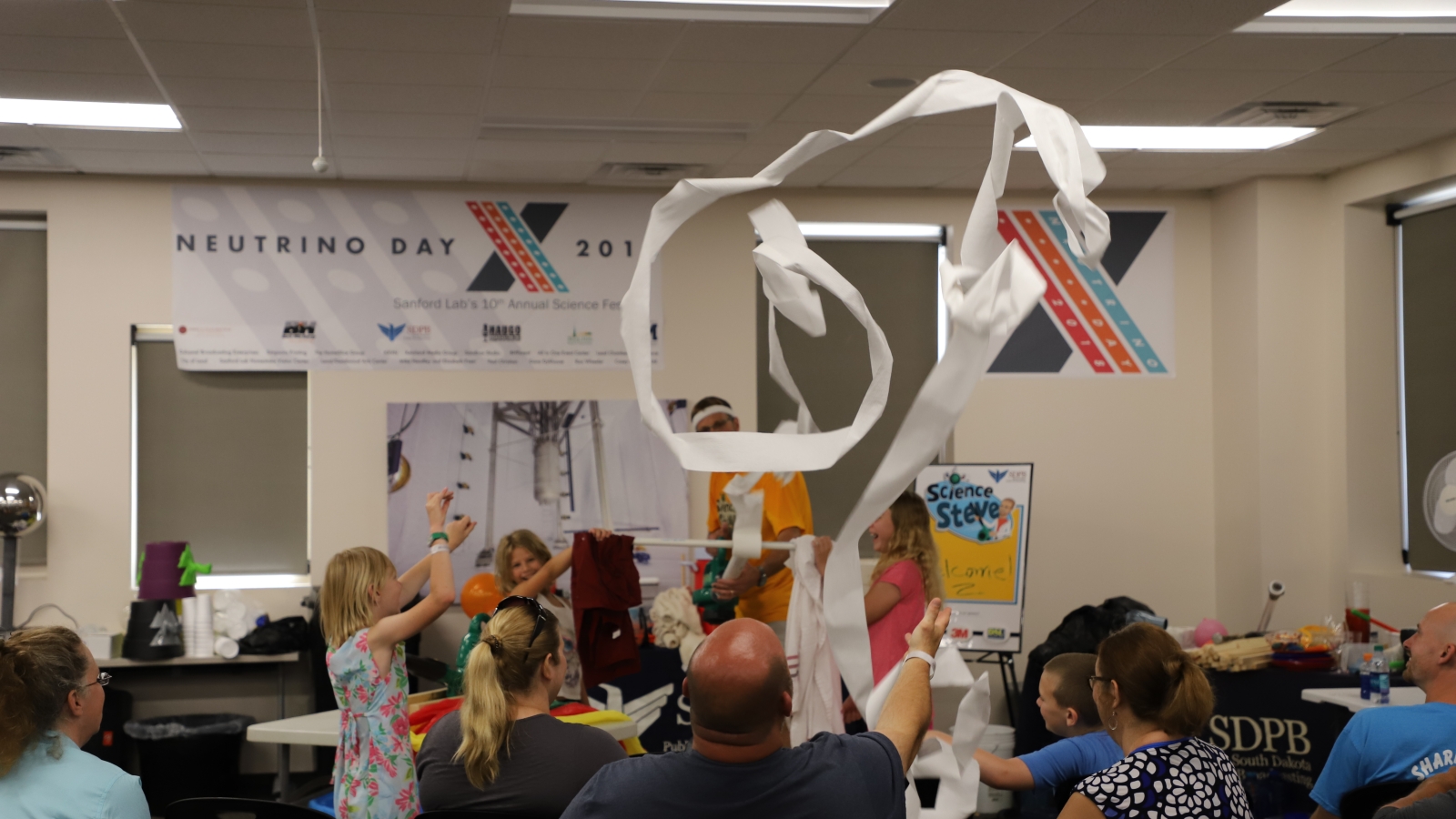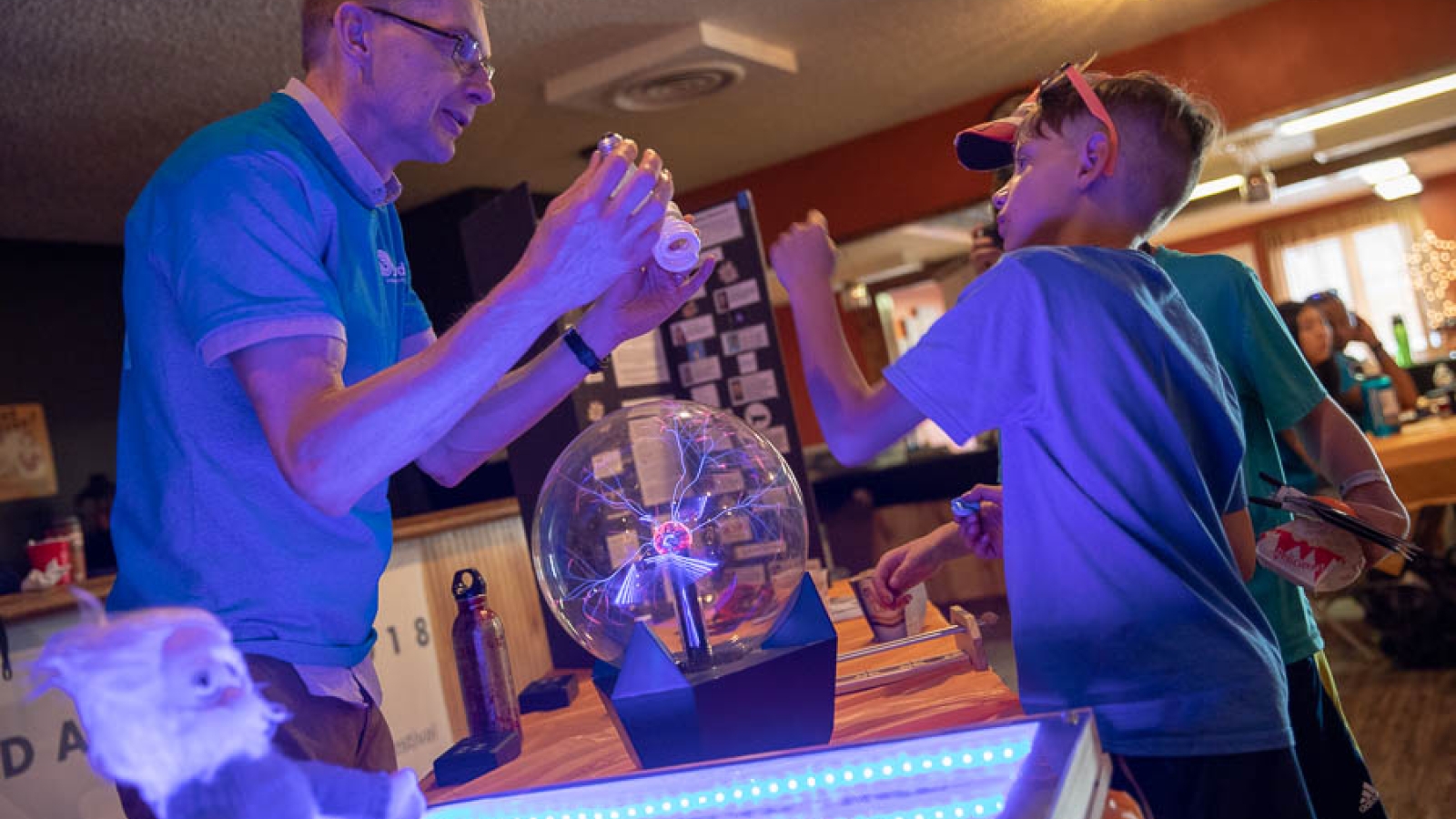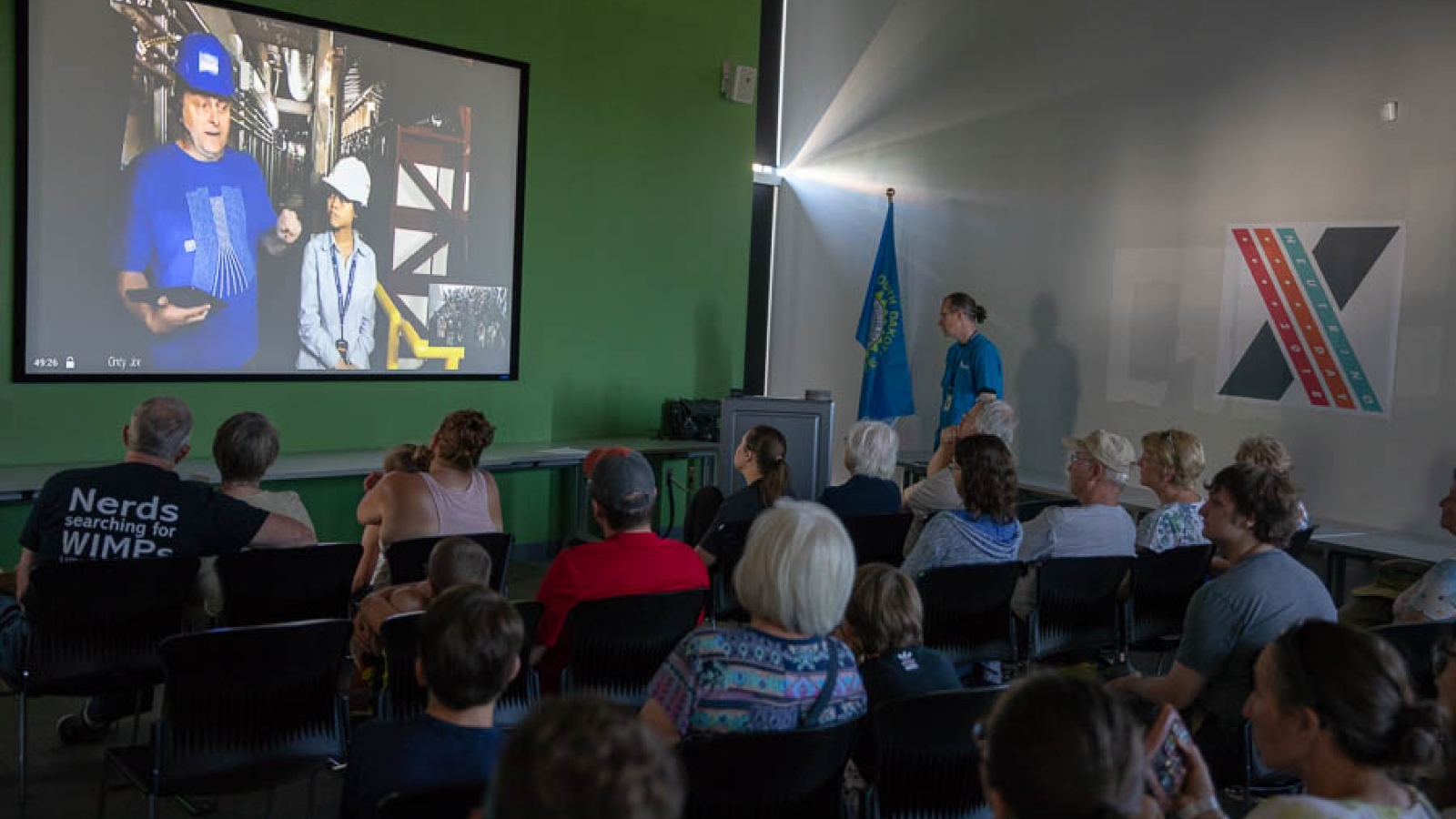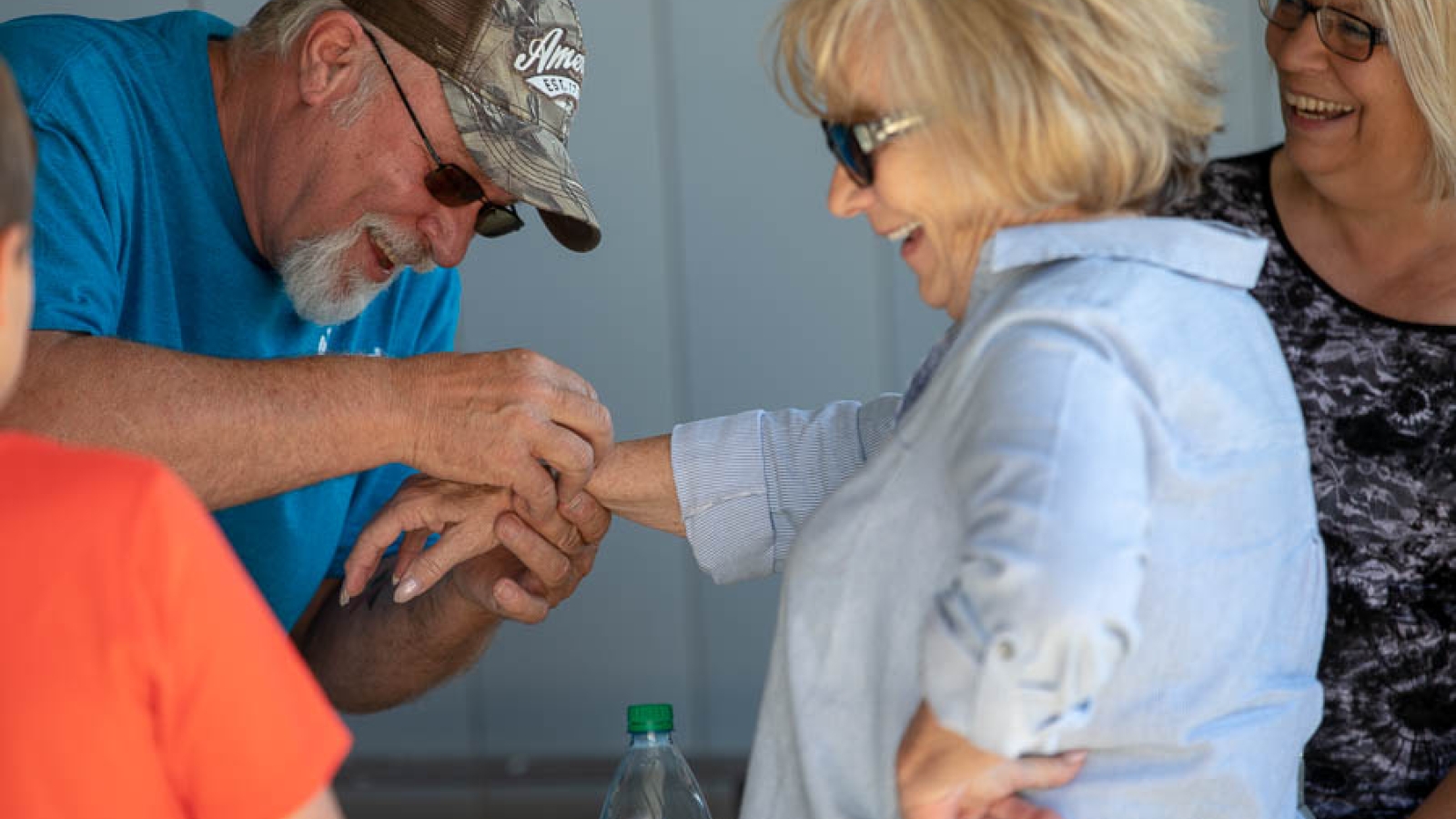The day started with sunshine and ended with a rainbow—fitting bookends for Neutrino Day X, the tenth anniversary of Sanford Lab’s free science festival. Nearly 1,500 people—the most to ever attend in a single day—from several states and a handful of countries participated in the many different activities.
It was a day of X-treme fun as children and adults toured the Yates Hoistroom, painted space rocks, watched geology demonstrations, “discovered” the different types of neutrinos, saw “wild science” demonstrations and learned about the science at Sanford Lab through hands-on activities and experiment displays.
“We want to inspire people of all ages to get excited about science,” said Constance Walter, communications director at Sanford Lab. “Neutrino Day helps us do that in a fun and engaging way.”
Number of people who attended Neutrino Day
This is a single-day record for Neutrino Day. People came from all over the United States, including Texas, Illinois and Georgia, and from countries around the world, including Croatia, New Zealand and the Philippines. "We think it's really great that you can come to Neutrino Day and, while on vacation, mix in a bit of education for our kids that they really love. We're very happy," said a father from Texas.
Number of solar neutrinos that passed through our guests during Neutrino Day
Vince Guiseppe, a researcher with the Majorana experiment, estimated this number based on our understanding of how many neutrinos pass through an individual's body every second. "It's a big number, and there are some fun equal descriptions: 10 sextillion, 10 billion trillion, 10 million quadrillion or 10,000 quintillion." You can pick the number!
Bags of popcorn consumed
Science Cinema featured fun science videos served with movie theater-style popcorn made at Sanford Lab.
Gallons of nitrogen ice served during Neutrino Day
"We had so many people, I had to run to the store twice to get more supplies," said professor Mike Dowding from SD Mines.
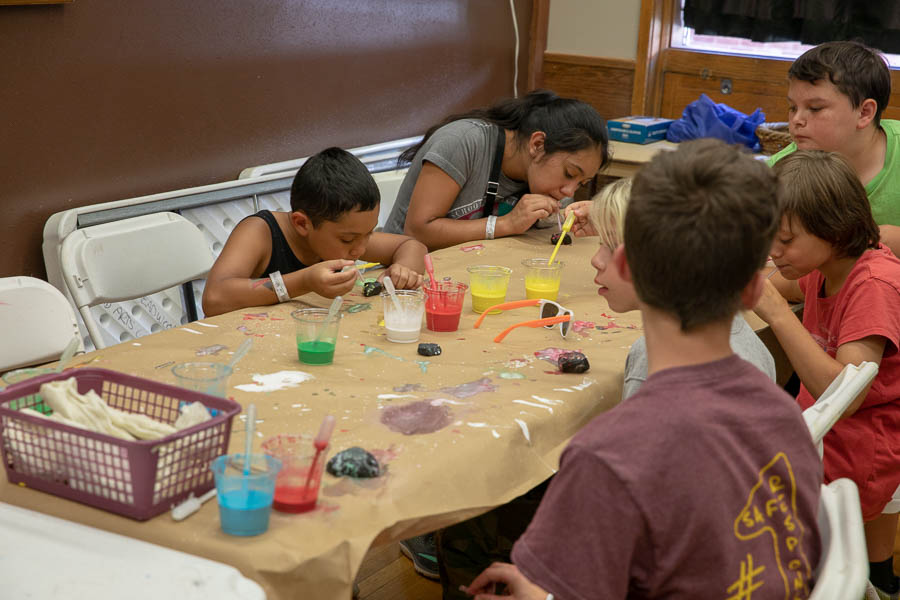
"About 600 people stopped by the Lead-Deadwood Arts Center and we painted at least 300 space rocks. It was a huge Neutrino Day!"—Karen Everett, director, Lead-Deadwood Arts Center
Over the past 10 years, we’ve been fortunate to receive generous financial and in-kind support for Neutrino Day. Without the help of corporate and individual sponsors, we would not be able to bring you so many exciting and fun events every year.
We also had tremendous help from our partners—the Sanford Lab Homestake Visitor Center, the City of Lead and the Lead Chamber of Commerce.
Thank you especially to all who attended this year. You are the reason we do this year after year. Stay excited and keep exploring. We'll see you next year.
